How banks are strategizing to cater to middle market clients
Margaret Callihan President & CEO – SunTrust Bank South Florida
What types of businesses are expanding the types of services that South Florida banks offer in the area?
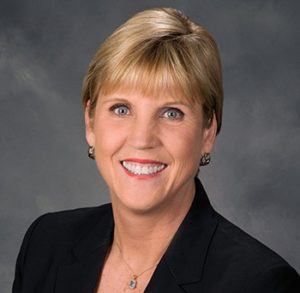 South Florida is comprised of many different businesses and at SunTrust, we focus on delivering our purpose of Lighting the Way to Financial Well-Being to meet all of their unique needs. In this year’s SunTrust Business Pulse Survey, we found that four out of five businesses across the U.S. are preparing for growth. They are planning to stimulate growth primarily by introducing new products or services and some anticipate M&A. We are seeing that trend not only nationally but in South Florida as well.
South Florida is comprised of many different businesses and at SunTrust, we focus on delivering our purpose of Lighting the Way to Financial Well-Being to meet all of their unique needs. In this year’s SunTrust Business Pulse Survey, we found that four out of five businesses across the U.S. are preparing for growth. They are planning to stimulate growth primarily by introducing new products or services and some anticipate M&A. We are seeing that trend not only nationally but in South Florida as well.
The entrepreneurial climate in South Florida has nurtured a variety of industries from multinational companies to local businesses. Some of the industries include information technology, life sciences, health care and trade and logistics due to our strategic location for serving the Americas. Moreover, businesses of every size are looking for access to capital and new and innovative exit strategies. As the financial needs in our community have become more complex and specific, specialized services have become more necessary than ever before in the market. Consequently, SunTrust has deployed a robust specialty strategy.
How does having investment-banking services accessible to the middle market impact South Florida?
The economy has changed significantly in recent years, becoming more global and less tied to specific markets. Today, a company headquartered in Miami can do business all over the world without ever having to open additional locations, giving business owners the ability to continue building and growing from Miami. In time, owners may seek to expand their business through acquisitions, sell their business or have a need to raise capital to undertake an expansion of facilities. Much of the business growth in our region can be found in the middle market. Our team of bankers has the ability to leverage the full suite of the investment banking capabilities of SunTrust Robinson Humphrey to better serve these needs when local companies decide it’s the right time to make those moves.
How has the influx of foreign investors and high-net-worth individuals into Miami-Dade County positively affected the economy in terms of local wealth?
What’s exciting is that so much of the wealth we see today is being generated locally, which is different from the historical trend of wealth being retired here. We also continue to benefit from foreign direct investment, as well as organic growth from local business and additional investments into new industries. All of these factors are contributing to the economy’s diversification. It bodes well for the health of a local economy.
How Miami’s thriving international population creates lucrative opportunities for the banking sector
Antonio Cassio Segura President & CEO – Banco do Brasil Americas
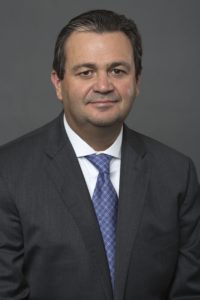
What encouraged Banco do Brasil, the largest bank in Brazil, to establish a presence in Miami?
Miami is an international gateway that welcomes foreigners who are both short-term tourists and long-term visitors. Given their different interests, this is a perfect opportunity for Banco do Brasil Americas, which seeks to provide comprehensive international banking solutions for foreigners, not simply people living in Brazil. The average foreigner stays in South Florida an average of three months a year. During their stay, they need full access to a variety of banking services. We provide valuable assistance to these foreigners by offering credit cards, checking accounts, auto loans, mortgages and investment options in their preferred languages: English, Portuguese or Spanish.
How has the perception of Miami evolved within the Brazilian business and investment community?
Brazilians love Miami. They see the city as an ideal second-home destination because it is very similar to the environment they are used to back home in Brazil. It has the same good weather, beautiful beaches, high-quality restaurants and amazing nightlife that they can find at home, as well as good infrastructure, good schools and security, both in terms of physical safety and safety of assets. Increasingly, Brazilians are buying businesses and commercial property as well.
For those Brazilian investors seeking business opportunities in Miami, what are their preferences and what interests them in terms of property?
There are two kinds of Brazilian investors we are seeing in South Florida. One type is looking to buy commercial property to lease later. These investors want income in U.S. dollars and are looking forward to further diversifying their investments. They don’t simply want to put their “eggs” (money) in different “baskets” (types of investments). They also want to put these “baskets” into different “wagons”—in other words, they want to invest outside of Brazil. These investors are buying stores like CVS and Walgreens, as well as strip malls and shopping centers. The second type of investors have already achieved great success in Brazil and want to further their reach to Miami. Because they want to expand on their assets in Brazil, they are opening affiliates or branches of their existing companies or institutions—especially clinics and schools— in Miami. However, these groups share similar goals for their activity in Miami in that they want to continue succeeding in the market for the long-term. From where the international market stands, it is clear that the investment flows going from Brazil to Miami and back is an irreversible trend. There is no going back.
Invest: Miami speaks with Kasra Moshkani, South Florida General Manager
Uber’s mission is to make Miami more livable and better connected. South Florida is one of the company’s fastest-growing markets, driven both by local and tourist demand. Tourists think of Miami as a world- class city and expect transportation options like Uber to exist here. Meanwhile, local riders tell us that Uber complements existing public transit options. Because ours is a 24/7 service, we are also providing an alter- native to drunk driving, which has traditionally been a concern for a city like Miami, which is known for parties and nightlife.
Over the next few years, we want to continue to leverage our partnerships with the government and the private sector and launch initiatives to create transportation solutions for the community. The transit challenges in the region mean that South Florida offers many opportunities for innovation. This is one reason that Miami is the eighth city where we’ve launched UberPOOL, our carpool- ing service. During Art Basel Miami Beach 2015, we launched UberBOAT in partnership with Stella Artois to provide an alternative transportation option connecting the mainland to Miami Beach. Innovation is also fostered by the fact that Miami is emerging as a center for tech innovation and entrepreneurship. This allows us to forge creative partnerships with those who want to change the area for the better.
Our impact on the local community is also seen in the economic opportunities we generate. Our driver-partners come from diverse socioeconomic backgrounds—some are students at Miami Dade College, while others are retirees looking for extra income. In 2015, Uber launched UberUP (our urban partnership program), an initiative to work with urban communities to recruit 50,000 drivers in the U.S. East Coast region by the end of 2016, and we expect to meet at least 20 percent of that target in South Florida.
Invest: Miami speaks with Israel Velasco, Florida Region Executive
 One of our goals at Popular Community Bank is to maximize profitability while using fewer resources. To accomplish this goal, we are focusing intently on markets where we know we have the greatest competitive advantage. In 2014, Popular Community underwent a major restructuring, selling off its operations in California, Chicago and Orlando, leaving those in New York, South Florida and Puerto Rico. While we continue to function and present ourselves as a community bank, we have the benefit of a large, deep-pocketed parent company, Popular Inc. We access the extensive re- sources of our parent company to streamline and enhance our operations, particularly in the area of compliance. In this sense, we like to think of ourselves as a “super community bank.”
One of our goals at Popular Community Bank is to maximize profitability while using fewer resources. To accomplish this goal, we are focusing intently on markets where we know we have the greatest competitive advantage. In 2014, Popular Community underwent a major restructuring, selling off its operations in California, Chicago and Orlando, leaving those in New York, South Florida and Puerto Rico. While we continue to function and present ourselves as a community bank, we have the benefit of a large, deep-pocketed parent company, Popular Inc. We access the extensive re- sources of our parent company to streamline and enhance our operations, particularly in the area of compliance. In this sense, we like to think of ourselves as a “super community bank.”
Looking forward, the sectors that will drive the growth of the local banking industry are those of commercial and industrial real estate, aviation and import/export. Following a “hub-and-spoke” model, our South Florida growth strategy will rely on the acquisition of branches, rather than opening new ones. Given today’s regulatory climate, it is difficult for new bank charters to be awarded. Along with growth in the sector, there will also be continued consolidation. More regional and so-called “big banks” will enter the market, and community banks will have a hard time remain- ing afloat, given the soaring costs of compliance.
Despite these challenging constraints, there will continue to be a place for community banks in this market. While larger banks have the advantage of more assets and technology, this does not mean they are necessarily more competitive when it comes to providing a high level of care and paying close attention to customer service. Despite the trends towards increased mobile banking and electronic transactions, at the end of the day, banking culture, especially in South Florida, is still very much “high touch”—that is, clients like to see and know who their banker is and we can provide that.
Invest: Miami speaks with Jorge Salas, President and CEO
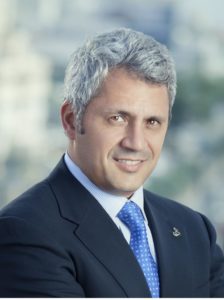 As Miami’s banking sector has grown significantly in recent years, it has become highly competitive. Competition is particularly strong for community banks; today, there are approximately half as many such banks in this market as there were 10 years ago, partially due to the cost of complying with new regulations. But this story is not the same for all banks.
As Miami’s banking sector has grown significantly in recent years, it has become highly competitive. Competition is particularly strong for community banks; today, there are approximately half as many such banks in this market as there were 10 years ago, partially due to the cost of complying with new regulations. But this story is not the same for all banks.
Banesco USA, a community bank based in Coral Gables, is thriving. Why? Banesco USA is part of Banesco Financial Group, which has a presence in over 15 countries and manages over $100 billion in assets. It therefore offers the best of both worlds: the financial strength and expertise of a large corporation and superior personalized service.
Despite South Florida’s promising growth, the banking industry faces challenges, particularly in the real estate sector. The strengthening of the U.S. dollar is already affecting Miami’s condo market, given that at least 70 percent of sales are made to foreign nationals whose currencies devalued (against the U.S. dollar) in the latter half of 2015. Most of these countries are South American.
One of Miami’s greatest assets is its highly international character. This ensures diversification: when certain global markets are struggling, money will still flow into South Florida from other regions. Miami-Dade is seeing an influx of capital from New York and other northeastern U.S. cities, as well as Canada and many European countries, like Spain. (Such is the growth in Spanish investments that the affluent village of Key Biscayne has been nick- named Key Bis-Spain.)
A good example of this internationalization is the influx of Venezuelans fleeing economic and political instability. The impact of this migration is felt in the rapidly growing South Florida cities of West- on and Doral, which have high numbers of Venezuelan residents and businesses. The Venezuelans coming here are young, educated and driven to succeed. They greatly appreciate their new homes and are here for the long haul. In about 10 years’ time, they will be what many Cuban-Americans are today—Miami’s political and business leaders.
How the leading U.S. airport in air freight is crafting strategy for the long term
Emilio T. González Director – Miami-Dade Aviation Department
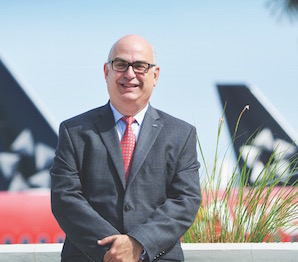
How has the strengthening U.S. dollar impacted passenger air traffic?
Our numbers have dipped as a result of the currency exchange rates, particularly when it comes to Latin American visitors. At the same time, we are expanding into new markets and seeing more diversification in our passenger lists. The net result was that 2015 was our best year for passenger growth, with 3 million more travelers year-over-year and a new record of 44.3 million annual passengers. Last year, Miami International Airport (MIA) also added eight new airlines and is now home to 101 carriers—the most of any U.S. airport. Additionally, MIA welcomed ve new international nonstop passenger routes: Cordoba, Argentina; Istanbul, Turkey; Manchester, England; Monterrey, Mexico; and Vienna, Austria. These developments speak to the fact that Miami is becoming more than just the Gateway to the Americas but the new gateway to the world.
For Miami-Dade’s business community, deepening ties with China is a top priority. What is MIA doing to facilitate direct air connection to the country?
Miami is the furthest geographic point from China in the mainland U.S., posing a significant barrier to bringing direct flights from China here. MIA’s strategy is not strictly focused on generating traffic to China, but building connectivity to Asia. Our studies show that mainland China on its own would not generate enough traffic to route a direct flight there, as they project that passengers from the country would only make up 25 percent of the demand for Miami-bound flights. However, Japan, South Korea, the Philippines, Indonesia, Vietnam and other Asian countries boast tremendous potential to fill planes. We are presently engaging with Asian air carriers that are investing significantly in ultra-long haul aircraft and looking to expand their routes, such as EVA Airways and Cathay Pacific.
In 2015, MIA was designated by the International Air Transit Association (IATA) as a pharmaceutical freight hub. What is the impact of this distinction?
Pharmaceutical air cargo is a huge industry, and so far we have only captured a small portion of it. In 2015, we became the first airport in the U.S.—and only the second in the world—to be IATA-certified as a pharma hub. In early 2016, MIA hosted our first, and well attended, workshop for key pharma stakeholders. This fits perfectly with our strategic plan to grow and diversify our cargo facilities. Pharma cargo at MIA has grown 80 percent in the last ve years. And with this designation, and the partnerships we’ve developed with our freight forwarders and customs brokers, I think we are well positioned to capture a huge portion of the lucrative global pharma business.
Invest: Miami speaks to Gary J. Spulak, President
In 2015, Embraer celebrated its 36th year in South Florida. Embraer’s arrival in Florida was our rst step toward globalization by establishing our U.S. presence. The U.S. was the most important aviation mar- ket at the time, and North America continues to be the strongest global market for Embraer aircraft. We arrived with a vision to become a major player in global aerospace and are now the highest aggregate value exporter in Brazil, a traditional commodities exporter.
For us, 2015 was filled with milestone achievements, notably a record sales order book value of $22.9 billion and the highest delivery volume of business and commercial aircraft in five years. Last year, Florida was key to the 10th anniversary of our executive jets business, launched in 2005 as a pillar of our diversification strategy. Since 2011, we have produced over 130 executive jets, valued at over $1 billion, in Florida. Most of these jets operate in the U.S., but we have also exported aircraft from Florida to 12 other countries. In 2013, we established a production facility for our defense and security business in Florida, and last year, it achieved its primary goal of delivering the first light-attack aircraft to the U.S. Air Force for Afghanistan.
To sustain global competitiveness, investment in innovation, research and development, new technologies and process enhancements.
Our corporate presence in South Florida is critical to our business development activities across the world. Over the last three decades we have witnessed Miami’s evolution from a hub of the Americas to a global platform for international business. As more businesses, industries and aviation companies recognize Miami’s key role in the global market, we will see more customers for commercial and business aircraft in our community.
Invest: Miami speaks with Marilyn Devoe, Vice President
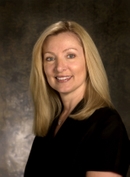 Two years ago, American Airlines merged with US Airways, becoming the largest airline in the world. Since then, our efforts have been centered on becoming the greatest airline in the world for our customers, employees, stakeholders and partners.
Two years ago, American Airlines merged with US Airways, becoming the largest airline in the world. Since then, our efforts have been centered on becoming the greatest airline in the world for our customers, employees, stakeholders and partners.
Miami International Airport (MIA) is our third-busiest hub, following Dallas/Fort Worth and Charlotte, and our largest hub for international flights. We continued to pursue growth in this vibrant city. Just last year, we added six new destinations from MIA: San Antonio, Austin, Kansas City, Salt Lake City, Barranquilla, Colombia and Monterrey, Mexico. But our growth is not just measured by the number of flights and destinations we serve; it is also seen in the number of widebody aircraft—that is, double-aisled planes—we operate at MIA. Each widebody added to our hub has a significant economic impact, contributing, on average, 16 new pilots and 45 flight attendants.
As the largest airline operating at MIA, accounting for roughly 70 percent of tra c and servicing a high volume of international passengers, it is more important than ever to ensure our processes are streamlined. Technology is playing a key role, from online check-in, to the free mobile passport app that allows U.S. and Canadian citizens to be granted clearance within four seconds of arriving at U.S. Customs. American’s crewmembers are provided with Global Entry, which further eases the e ect of our people on the Customs and Border Protection system. We are also working to create more exit lanes and recently began connecting international baggage, thus easing the ow for international customers arriving to or transiting through MIA.
MIA remains important to American’s present and is key to our future success. Apart from its strategic location, what makes Miami unique is the supportive, collaborative spirit of the government and the business community. In the past couple of decades, American Airlines and the Greater Miami area have both experienced incredible growth. And, looking ahead, we see a promising future for both.
Invest: Miami speaks to Michael Reininger, President
America’s love affair with the car grew from important societal developments. For baby boomers, the automobile represented access and social mobility. Getting a license meant freedom. Today, the car is increasingly becoming a hindrance to freedom.
What sets Brightline apart is that we are heavily invested not only in the idea of transit-oriented development but also in owning and operating a major component of the transportation resource as well. Almost everywhere else, the real estate component is the purview of the private sector entity, and transportation the purview of a public sector entity; we are invested in both. Individually, they represent robust businesses, but combined, one leverages the other, giving us a position nobody else has replicated. Our approach is decidedly private sector, different for example, from New York’s subway, which is necessarily public. This allows us to focus on profitability and serving clients, rather than maximizing ridership by keeping prices low at a profit loss.
South Florida is ideal for the Brightline train service. Historically, city development in Florida occurred along rail lines that have been maintained for the past 120 years, creating distances too long to drive comfortably and too short to y efficiently. We want riders to be able to tap into existing and emerging modes of transportation to increase accessibility throughout South Florida. When we started, services like Uber and city bike-share programs were not around, but since then, have grown immensely and we are finding ways to connect with these. Meanwhile, in developing our stations, we focus on variety, which means diverse uses of space—whether office, retail or entertainment. Looking ahead, multi-modal transportation development will continue to present more growth opportunities.
 South Florida is comprised of many different businesses and at SunTrust, we focus on delivering our purpose of Lighting the Way to Financial Well-Being to meet all of their unique needs. In this year’s SunTrust Business Pulse Survey, we found that four out of five businesses across the U.S. are preparing for growth. They are planning to stimulate growth primarily by introducing new products or services and some anticipate M&A. We are seeing that trend not only nationally but in South Florida as well.
South Florida is comprised of many different businesses and at SunTrust, we focus on delivering our purpose of Lighting the Way to Financial Well-Being to meet all of their unique needs. In this year’s SunTrust Business Pulse Survey, we found that four out of five businesses across the U.S. are preparing for growth. They are planning to stimulate growth primarily by introducing new products or services and some anticipate M&A. We are seeing that trend not only nationally but in South Florida as well.

 One of our goals at Popular Community Bank is to maximize profitability while using fewer resources. To accomplish this goal, we are focusing intently on markets where we know we have the greatest competitive advantage. In 2014, Popular Community underwent a major restructuring, selling off its operations in California, Chicago and Orlando, leaving those in New York, South Florida and Puerto Rico. While we continue to function and present ourselves as a community bank, we have the benefit of a large, deep-pocketed parent company, Popular Inc. We access the extensive re- sources of our parent company to streamline and enhance our operations, particularly in the area of compliance. In this sense, we like to think of ourselves as a “super community bank.”
One of our goals at Popular Community Bank is to maximize profitability while using fewer resources. To accomplish this goal, we are focusing intently on markets where we know we have the greatest competitive advantage. In 2014, Popular Community underwent a major restructuring, selling off its operations in California, Chicago and Orlando, leaving those in New York, South Florida and Puerto Rico. While we continue to function and present ourselves as a community bank, we have the benefit of a large, deep-pocketed parent company, Popular Inc. We access the extensive re- sources of our parent company to streamline and enhance our operations, particularly in the area of compliance. In this sense, we like to think of ourselves as a “super community bank.” As Miami’s banking sector has grown significantly in recent years, it has become highly competitive. Competition is particularly strong for community banks; today, there are approximately half as many such banks in this market as there were 10 years ago, partially due to the cost of complying with new regulations. But this story is not the same for all banks.
As Miami’s banking sector has grown significantly in recent years, it has become highly competitive. Competition is particularly strong for community banks; today, there are approximately half as many such banks in this market as there were 10 years ago, partially due to the cost of complying with new regulations. But this story is not the same for all banks.
 Two years ago, American Airlines merged with US Airways, becoming the largest airline in the world. Since then, our efforts have been centered on becoming the greatest airline in the world for our customers, employees, stakeholders and partners.
Two years ago, American Airlines merged with US Airways, becoming the largest airline in the world. Since then, our efforts have been centered on becoming the greatest airline in the world for our customers, employees, stakeholders and partners.